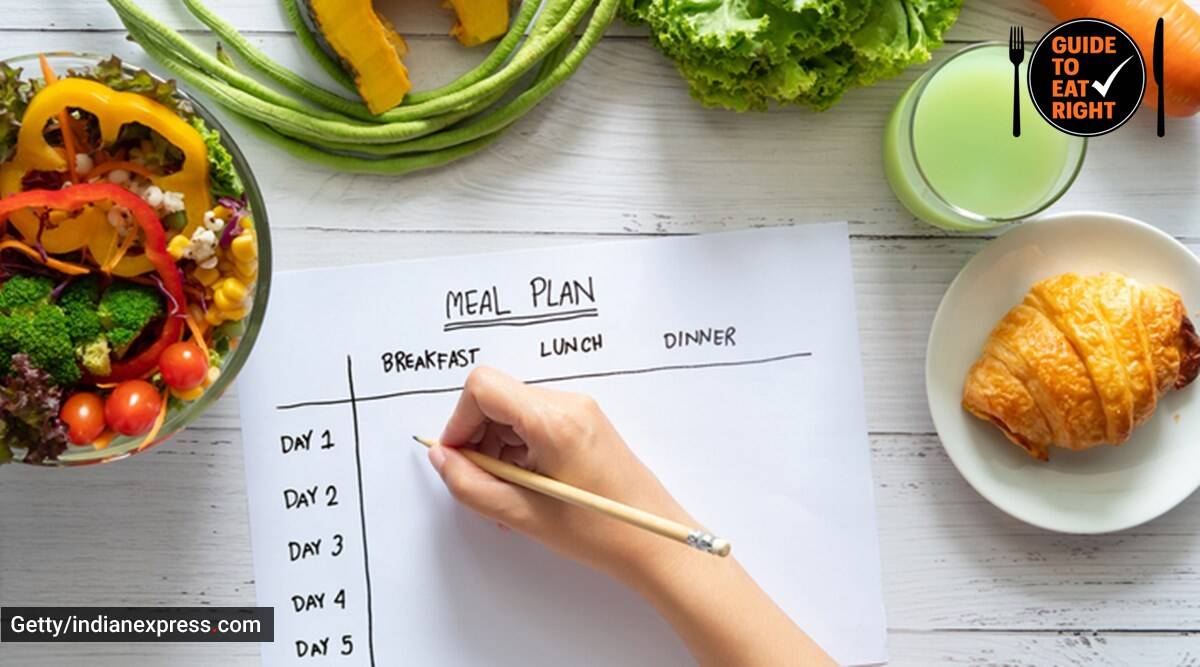
Many people don’t realize the amount of fiber whole grains provide. Four grams of fiber is found in a typical whole grain loaf of bread. Whole grains contain more fibre than refined white bread and no preservatives. Some whole grain cereals may be used as a substitute for white flour in baking recipes. But it's not as easy as sprinkling a handful on your cereal every day. Here are some tips that will help you get more fiber in your everyday grains.
Whole grains are a great source of fiber, and they help maintain regular bowel movements. They also reduce the risk of diverticulosis, an inflammation of the colon wall that causes pain and constipation. Lactic acid is found in these products, which can help the body absorb nutrients as well as promote the growth positive bacteria in the large intestinal tract. They can also boost the immune system and aid digestion. This combination of nutrients can help keep your digestive tract healthy.

The U.S. Department of Agriculture recommends keeping half of your grains whole. The U.S. Department of Health and Human Services says you should eat three one-ounce servings of whole grain every day. There are different recommendations for fiber. For example, young children need between 19 and 25 grams of fiber daily, while adults require between 21 and 38 grams. This study also included a comparison of the dietary intakes of whole grains with fiber found in other foods.
Whole grains can be difficult for some people to digest but they still provide a good source if fiber. Whole grains offer multiple benefits and can help you get more fiber into your diet. They are also rich in vitamins and minerals. Even if you don't eat processed foods, they can be used as a substitute. They have similar health advantages. You don't have to be a vegetarian or vegan. Increase your intake whole grains to avoid constipation later in life.
Whole grains might not be a healthy choice. However, they contain plenty of fiber and are great sources of nutrients. Whole grains can not only prevent constipation but also help with allergies and asthma. They can lower cholesterol and triglycerides. These are two major risk factors for heart diseases. Adding them to your diet could be the best way increase your fiber intake. It is as simple and easy as brown rice.

You should increase your intake whole grains to increase your fiber intake. According to USDA guidelines, you should eat five- to eight servings per day of grains, half of them whole grain. A serving is the same as half an ounce. You can substitute refined foods with high-fiber products depending on how many you eat. You can make the switch to whole grains if refined flour is not an option.
FAQ
How can you lose weight?
People who are looking for a way to look good and lose weight are the top goals. People want to be healthier and live longer. This is why they are so motivated to lose weight. There are many different ways to lose weight. These include strength training, cardio training, yoga and pilates. Each exercise has its pros and cons. Walking would be the best exercise if you are trying to lose weight. Lifting weights is a better choice if you are looking to increase muscle mass. This article will discuss which exercise and how to lose weight.
What kind of diet plan should you follow when trying to lose weight? You don't necessarily need to eat less food; rather, you just need to eat fewer processed foods and avoid junk food. It is recommended that you consume at least 2200 calories daily. If you want to lose weight faster, you should reduce your calorie intake even further. You will lose fat faster this way.
If you want to know how to lose weight fast, you should start exercising. Exercise will help you burn calories and boost your metabolism. It is important to combine exercise with healthy eating habits in order to effectively lose weight. Exercise can reduce your energy consumption, which means you won't be as able to eat as often. Regular exercise will help you burn more fat. Regular exercise can help you live a healthy life. They help you stay active and prevent diseases such heart disease, diabetes, obesity, hypertension, among others.
Try to walk as often as possible. Walking can burn around 500 calories an hour. Walking for 30 minutes a day will help you burn approximately 1500 calories. This will result in a loss of 1 pound per week. You can also run or jog for 10 minutes. Running burns about 1000 calories per hour. You should run 20 minutes each day if your goal is to lose five pounds in just three weeks.
In conclusion, the best way to lose weight is to combine exercise with healthy eating habits. Try to find a balance between these two factors.
How often do people fast every day?
Most people who adhere to a ketogenic lifestyle fast only once per week. Some people fast twice weekly. And others fast three times per week.
Every fast is different. Some people fast for 24 hours, whereas others fast for 48 hours.
Some people can even travel for up to 72 hours. But these extreme cases are very rare.
What is the best exercise for weight loss?
There are many factors that influence the amount of exercise required to lose weight. These include your gender, age, body type and how heavy you are. Most people need to exercise at least 30 minutes five days a weeks.
The American College of Sports Medicine recommends 150-minutes of moderately intense aerobic activity every week. It should be spread over three separate days.
You can lose 10 pounds by doing 300 minutes of moderate-intensity exercises each week, for example. This includes activities such as brisk walking, swimming laps, biking, dancing, playing tennis, golfing, hiking, jogging, running, and other similar activities.
For those just starting out, you might consider 20 minutes of vigorous activity every other week. This could be lifting weights, sprinting, jumping rope, and fast walking.
Aerobic exercise can also help you burn calories and increase muscle mass. Muscle burns more calories per calorie than fat. So building muscle while losing weight may help you achieve your goal faster.
How Much Weight Can You Lose in a Week?
The amount of weight you can lose depends on your current body fat percentage. It is important to first calculate how much weight you wish to lose. Then, determine your BMI. Your BMI (Body Mass Index) tells you how much weight should be lost to reach your goal. If your BMI is 25 or greater, you're overweight. If your BMI reads 30 or more, you are likely obese.
For example, let's say you have a BMI of 28.7 and are 200 pounds. This would mean that you'd have to lose about 70 pounds in order to reach a healthy weight. To see if you're overweight, visit www.healthyminds.com/bmi/.
Once you know your BMI, this formula will allow you to determine how many pounds per week you'll be able to lose.
(Your Goal Weight - Current Weight)/BMI * 7 Number Of Pounds Lost Per Week
For 50 pounds to be lost in one month, it would take 2 weeks of exercise. 56 days is equivalent to 7 pounds per day. That's 8.3 pounds per week.
You could also try this calculator from www.weightlosscalculator.net. It gives you a rough estimate of how many calories you should eat daily to lose 1 pound per week.
How long should I do Intermittent fasting to lose weight?
It is not as easy as you think. A number of factors need to be considered when determining how many days of fasting are needed for optimal fat loss. These factors include:
-
Your age. If you are younger than 40, intermittent fasting might be too difficult because you have less time for recovery after each fast. Alternately, if your age is over 60, intermittent fasting might prove too challenging because you may not have enough energy to last for extended periods of time.
-
Your current body composition. Longer periods of fasting are more beneficial if you have a lot muscle mass. Shorter fasting might be more appropriate for you if you have less muscle mass.
-
How physically active you are. You may need to increase your fasting time if you exercise often. This will ensure you get enough rest between workouts.
-
Your past health history. Some people with medical conditions like diabetes, heart disease, cancer, etc., may require additional fasting monitoring.
-
How do you handle stress? Stressful situations can make us eat more. This problem can be avoided by increasing the length of your fasting periods.
-
It is the type of diet you are following. Certain diets, like ketogenic diets, may require even longer fasting periods.
-
Your quality of sleep. Lack of sleep has also been linked to increased appetite and decreased metabolism. It could take some experimentation to discover the best method for you.
-
The amount of protein you consume. The ability to stabilize blood sugar levels. Eating more protein can lead to lower insulin levels. This would allow one to fast for longer periods.
-
Whether you're trying to gain or lose weight, people who are trying to gain weight usually require longer fasting periods than those who are trying to lose weight.
-
What proportion of calories do your fasting hours allow you to consume? You may lose more weight if you eat fewer calories each day than if you eat more.
-
Your overall fitness. Fasters who are very fit tend to have higher metabolic rates, which allows them to burn more calories throughout the day.
-
Your gender. Men tend to have greater appetites that women, so they may need a longer fast. Women are more likely to have smaller appetites and may need to fast only 20-30 minutes every day.
-
Your lifestyle. Are you someone who does a lot of exercise? Do you work out several times a week? Are you a worker who sits at a computer all day? These factors can impact how fast you should be moving.
-
How much do you spend per month on food? It doesn't always mean that you should spend a lot of money on groceries if you eat healthy foods. Whole grains can be replaced by white bread, fruits can replace candy bars, and lean cuts of meat can be used to save money.
-
It is vital that you control your hunger. Fasting may not be necessary if you don't want skip meals.
What is the difference between intermittent fasting or calorie restriction?
Calorie restriction is when you eat less than your body needs. Intermittentfasting is different as it doesn’t require you to restrict your calories. Rather, it focuses on eating fewer calories throughout the day.
Intermittent fasting is more effective because it allows you to enjoy foods you love without feeling guilty.
Both methods have pros and cons. Therefore, you need to decide whether you prefer one method over another.
How can busy people lose their weight?
It is best to eat less and exercise more to lose weight.
You'll gain weight if you eat too many calories. You will also gain weight if your exercise is not enough. Combining these two simple habits will help you lose weight.
Statistics
- According to a study sponsored by the American Council on Exercise, a person weighing around 140 pounds (64 kg) would burn 108 calories at a 30-minute beginner's Pilates class or 168 calories at an advanced class of the same duration (26). (healthline.com)
- According to Harvard Health, it's estimated that a 155-pound (70-kg) person burns roughly 112 calories per 30 minutes of weight training (5). (healthline.com)
- Another study found that 24 weeks of weight training led to a 9% increase in metabolic rate among men, which equated to burning approximately 140 more calories per day. (healthline.com)
- Among women, the increase in metabolic rate was nearly 4%, or 50 more calories per day (14Trusted Source (healthline.com)
External Links
How To
How to Intermittent Fasting
Intermittent eating is a way to lose weight that you only have one day of the week. It's usually Monday through Thursday. The idea behind this is to reduce your overall calorie intake while still getting adequate nutrition. This will allow you to burn fat more quickly than eating regular meals throughout the week.
The most common form IF is to reduce calories on specific days. This means you could skip breakfast every morning and still eat what you want the rest of the week. You can also opt to eat three small meals a day instead of two large.
There are many types of intermittent fasting. Each type of intermittent fasting has its pros and cons. Alternate day fasting is the easiest way to start out because you don't have to make any major changes to your lifestyle. But, there are some people who find it hard to follow such a strict schedule. These people might prefer to try different methods.
If you're looking to start an intermittent fasting routine, I recommend starting with alternate-day fasting. This will allow to slowly transition to more extreme fasting regimens without drastically changing your lifestyle.